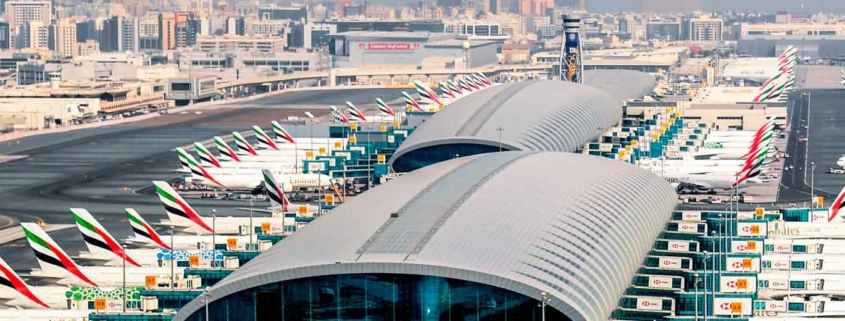The year 2023 marked a notable resurgence in global aviation, with a significant increase in passenger traffic that has redefined the rankings of the world’s busiest airports. This revival of the aviation sector, driven by post-pandemic recovery and growth in emerging economies, has brought about a series of changes and challenges that are shaping the future of aviation.
Atlanta Maintains Its Leadership
Hartsfield-Jackson Atlanta International Airport remains the undisputed leader in terms of passenger volume. With 104.7 million passengers in 2023, this airport has held the top position for more than two decades, except in 2020 due to the pandemic. Projections indicate that Atlanta could receive up to 110 million passengers in 2024, fully recovering its pre-pandemic levels.
Dubai Rises in the Global Ranking

Image: CNN
For the first time, Dubai International Airport has reached second place in the global ranking. In 2023, this airport welcomed nearly 87 million passengers, representing a 31% increase from the previous year and a 1% increase compared to 2019. Dubai now connects 262 destinations in 104 countries through 102 international airlines, consolidating its position as a crucial node in the global aviation network.
Global Traffic Recovery
Worldwide, passenger traffic grew by 27% in 2023 compared to 2022, reaching almost 94% of 2019 levels. Domestic travel, in particular, recovered rapidly, growing by 20% and reaching nearly 97% of pre-pandemic levels. The United States, with the largest domestic market in the world, had a strong presence in the top 10, with airports such as Dallas/Fort Worth, Denver, Los Angeles, and Chicago O’Hare.
Boost in International Travel

Image: Agbi
The growth in international travel was a key factor in the sector’s recovery. In 2023, international travel increased by around 37%, reaching approximately 90% of 2019 figures. Dubai, the world leader in international passenger traffic, has become not only a major hub but also an attractive destination in its own right.
Significant Changes in Rankings
London’s Heathrow Airport experienced a notable rise, moving from eighth place in 2022 to fourth in 2023. Tokyo’s Haneda Airport recorded the biggest leap, advancing from 16th place to fifth, reflecting the reopening and normalization of traffic in Asia. Meanwhile, Istanbul Airport maintained its seventh position, and New Delhi’s Indira Gandhi International Airport dropped from ninth to tenth place, although it remains an example of aviation growth in India.
Challenges and Future Perspectives

Image: Skyscanner
Despite rapid growth, the aviation sector faces several challenges. The shortage of air traffic controllers in the United States and the high demand for new, more efficient aircraft are putting pressure on the industry. Supply chain delays, while improved, continue to affect the delivery of new aircraft, which could limit growth if airlines cannot meet demand.
The pandemic has also underscored the importance of resilience in the sector. The Airports Council International (ACI) is working with airports to improve their preparedness for future issues and ensure efficient operation focused on the passenger experience.
The resurgence of air traffic in 2023 is a positive sign of recovery and continued growth. With greater connectivity and expansion in emerging regions, the aviation industry is on track to overcome current challenges and pave the way for a more resilient and sustainable future. Airports worldwide, led by Atlanta and Dubai, are demonstrating their ability to adapt and thrive in a post-pandemic environment, marking the beginning of a new era in global aviation.
Visit our website for more.












Leave a Reply
Want to join the discussion?Feel free to contribute!